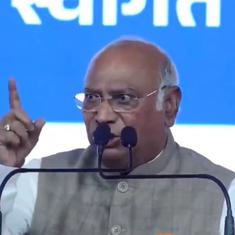Changing India has been a demanding subject. On photography it has placed the urgent necessity of documenting and creating an image of the nation, of moving beyond the anthropological and ethnographic gaze, from the colonial to the postcolonial condition. Indeed, of all the media and art forms at play across the late nineteenth and twentieth centuries, photography has borne the burden of wresting back or recalibrating modes of representation.
For a newly independent people, the photograph served as a restorative instrument, one that conveyed vimarsh or a ‘reflection of the “truth” of the time, of India and her citizens, assuming a gradual unfoldment. The photographer, much like the documentary filmmaker of the Films Division, was at the forefront of determining the gaze from within.
The fact that this was achieved without the benefit of the organising principles of pedagogy, photography schools, the making of a canon, the protocols of a hierarchy of knowledge, or critical readings, profoundly influenced the salience of photographic genres in the subcontinent.
From the last decades of the nineteenth century, photography gained currency as the by-product of media and industry, giving rise to photojournalism, serving the flourishing film industry, and drawing on state patronage, which, especially after independence, sought its use to adorn public buildings and institutions. For a population that had less than a little over 15 per cent literacy in 1947, the importance of such visual communication cannot be overemphasised.
The push for independence was actively fostered by a large number of newspapers owned by Indian politicians and publishers, and the photographs that they carried drove the theatre of politics into the arena of the visual document. As an emerging new nation, India presented a bipolar photographic view, pitting imperial and nationalist political values and assertions of identity against one another.
Photographic histories written in the mid-1980s usually trace aesthetic enquiry through the studio and the individual photographer and make little reference to one of the fastest proliferating areas of photography, the popular newspaper. We may read here an emergent field, only dimly captured perhaps in the grainy letterpress photographs of Swaraj or Young India, but one which presages the photographic archive as it was to unfold over the next hundred years.
The iconic figure of Gandhi in his loincloth as a celebration of poverty viewed against the heavily-clad British administrators became symbolic of this visual dyad. So rapidly did Gandhi’s popularity spread that mention of his leadership was soon banned in cinemas and Indian film directors had to make do with his photograph in the climax of the film, a signifier that was immediately understood and applauded by audiences.

Ironically for Gandhi, who spoke of India’s ‘dumb millions’, it is his figure, in public address with other Congress leaders, that embeds early images of the crowds he attracts, and which constitute a critical component in the making of the image of the ‘nation’. Appearing incidentally, like a vast backdrop, the crowd photographs of the early decades of the twentieth century are a little studied phenomenon of palpable public response.
Photography is the only art form that accords space, contour, and attitude to the crowd, engaging them with a presence but also a fixity and anonymity in the making of a visual field. Serving as a base image for collective protest, the smudged newspaper pictures of crowds at political meetings during this period serve as a precursor to the protest images of labour, farmers, trade unions, and women that dot the photographic history of India.
Even more than Gandhi, it is the photographic residue of the crowd that powerfully inserts the idea of publicness, signalling what Jacques Ranciere speaks of as ‘the mass age’, and the role of photography as an advocate in the national narrative. “The crowd at Gandhi’s prayer meeting in Bengal” (1947), which was held to protest against violent communal upheaval, renders the spontaneous spirit of collective action, the tightly packed bodies seen here only in contour.
The crowd as image displaces the iconic figure of Gandhi even as it disperses the idea of subjectivity in constructing the photograph. What the photograph of the crowd asserts, in the words of Ranciere, is the ‘existence of the masses’, among early images of the people of the subcontinent, unchoreographed, expressive, and assertive. The static and posed images of the People of India volumes of 1868 appear to become unfixed and mobile in the gatherings witnessed. Women appear unveiled at public gatherings and protests against the use of alcohol, freed from the fixity of their role in community and family. In pre-independent India, these images are also an index of the typology of a ‘racialised other’ that poses a threat to the British imperial regime.

The crowd’s instrumentality in the making of a historic event is at its peak in acts of protest and violence. Yet, how should violence against the crowd, again the recipient of British suppression, be construed? Within a 50-year period, the function of photography widened to keep up with India’s changing political reality. The Jallianwala Bagh massacre of 1919 was a pivotal point that transformed the photograph into forensic evidence in the case against General Dyer who ordered the firing on a peaceful gathering in a public park in Amritsar. It also disrupted the traditionally peaceable image field of visual art in India. Historically, Indian art is curiously devoid of the depiction of trauma, and memorials to war are few and far between. In the instance of Jallianwala Bagh, Narayan Vinayak Virkar’s photographs show individual figures marking the places where bullets penetrated the walls, creating a precarious and chilling picture of the unprovoked massacre. In subsequent decades, images of war, famine, unrest, and catastrophe would enhance this document of subcontinental disaster photography.

Excerpted with permission from Points of View: Defining Moments of Photography in India, Gayatri Sinha, by Kiran Nadar Museum of Art.










